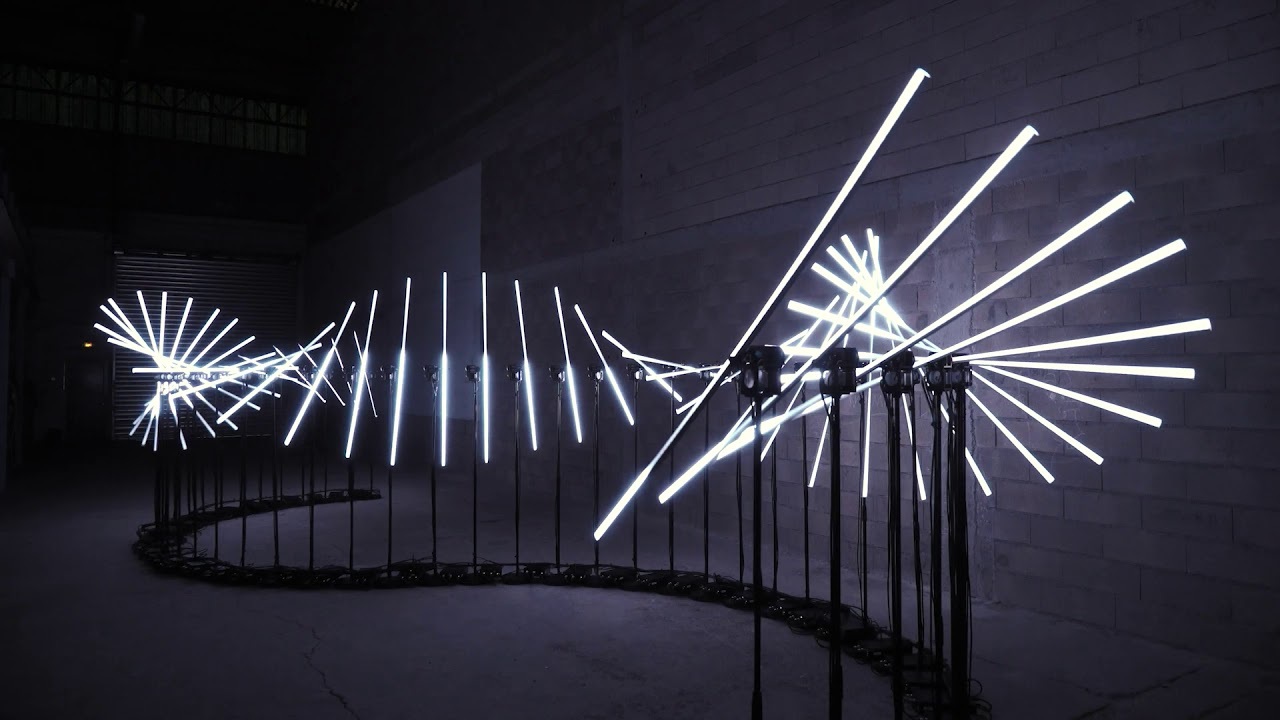
Installation art is a unique form of artistic expression that transforms spaces into immersive experiences. Unlike traditional art forms, it often involves multiple mediums and can be interactive. But what makes installation art so captivating? For starters, it breaks the boundaries of conventional art by engaging all senses, not just sight. Imagine walking into a room where every corner tells a different story, or where you become part of the artwork itself. This type of art challenges perceptions and invites viewers to explore new dimensions. Ready to dive into the world of installation art? Here are 28 fascinating facts that will deepen your understanding and appreciation of this dynamic art form.
Key Takeaways:
- Installation art is a unique, immersive form that transforms spaces and engages multiple senses. It challenges traditional art and inspires new ways of thinking about space and experience.
- Artists use a wide range of materials and techniques to create installation art, including everyday objects, sound, light, and even smell. It has a global impact, influencing other art forms and fields like architecture and interior design.
What is Installation Art?
Installation art is an immersive, three-dimensional art form that transforms a space. It often engages multiple senses, creating an experience rather than just a visual piece. Here are some fascinating facts about this unique art form.
-
Installation art emerged in the 1960s and 1970s as artists began to explore new ways to engage viewers.
-
Unlike traditional art forms, installation art often requires the viewer to move through the space to experience it fully.
-
This art form can be temporary or permanent, depending on the artist's intention and the space available.
-
Yayoi Kusama, a famous installation artist, is known for her immersive, polka-dot-covered rooms.
-
Christo and Jeanne-Claude are renowned for their large-scale environmental installations, such as wrapping the Reichstag in Berlin.
Materials and Techniques
Installation artists use a wide range of materials and techniques to create their works. This flexibility allows for endless creativity and innovation.
-
Common materials include everyday objects, natural elements, and digital media.
-
Some installations incorporate sound, light, and even smell to enhance the sensory experience.
-
Mixed media is often used, combining different materials and techniques to create a cohesive piece.
-
Site-specific installations are designed for a particular location, taking into account the space's unique characteristics.
-
Interactive installations invite viewers to participate, blurring the line between artist and audience.
Famous Installations
Many installations have gained international recognition for their creativity and impact. These works often challenge viewers' perceptions and provoke thought.
-
The Weather Project by Olafur Eliasson filled the Tate Modern's Turbine Hall with a giant sun and mist, creating an otherworldly atmosphere.
-
The Gates by Christo and Jeanne-Claude featured 7,503 saffron-colored gates in New York City's Central Park.
-
Infinity Mirrored Room by Yayoi Kusama uses mirrors and LED lights to create an illusion of infinite space.
-
Cloud Gate by Anish Kapoor, also known as "The Bean," is a reflective sculpture in Chicago's Millennium Park.
-
Spiral Jetty by Robert Smithson is a massive earthwork installation in Utah's Great Salt Lake.
Impact on the Art World
Installation art has had a significant impact on the art world, influencing other art forms and inspiring new ways of thinking about space and experience.
-
It challenges traditional notions of art by emphasizing experience over object.
-
Many contemporary artists draw inspiration from installation art, incorporating its principles into their work.
-
Museums and galleries have adapted to accommodate large-scale installations, often dedicating entire spaces to these works.
-
Installation art has influenced other fields, such as architecture and interior design, by encouraging innovative use of space.
-
It often addresses social, political, and environmental issues, prompting viewers to reflect on these topics.
Installation Art Around the World
Installation art is a global phenomenon, with artists from diverse backgrounds contributing to its evolution. Each culture brings its unique perspective to the art form.
-
In Japan, teamLab creates immersive digital installations that blend art, technology, and nature.
-
Ai Weiwei, a Chinese artist, uses installation art to comment on political and social issues in China.
-
El Anatsui, a Ghanaian artist, creates large-scale installations from recycled materials, reflecting on themes of consumption and waste.
-
Chiharu Shiota, a Japanese artist, uses thread and everyday objects to create intricate, web-like installations.
-
Do Ho Suh, a South Korean artist, explores themes of home and displacement through his fabric installations.
The Future of Installation Art
As technology advances, installation art continues to evolve, incorporating new tools and techniques to create even more immersive experiences.
-
Virtual reality and augmented reality are being used to create digital installations that can be experienced anywhere.
-
Artificial intelligence is being explored as a tool for creating interactive and adaptive installations.
-
Sustainability is becoming a focus, with artists using eco-friendly materials and methods to create their works.
Final Thoughts on Installation Art
Installation art isn't just about filling space with objects. It's about creating an experience that engages all senses. From its roots in the 1960s to today's immersive digital installations, this art form has evolved dramatically. Artists like Yayoi Kusama and Ai Weiwei have pushed boundaries, making viewers rethink their surroundings.
Whether it's a room filled with mirrors or a field of ceramic poppies, installation art challenges perceptions and evokes emotions. It's a powerful medium that can transform ordinary spaces into extraordinary experiences. Next time you encounter an installation, take a moment to immerse yourself fully. You might find a new perspective or a deeper connection to the world around you.
So, keep exploring and let installation art surprise you. It’s a journey worth taking.
Frequently Asked Questions
Was this page helpful?
Our commitment to delivering trustworthy and engaging content is at the heart of what we do. Each fact on our site is contributed by real users like you, bringing a wealth of diverse insights and information. To ensure the highest standards of accuracy and reliability, our dedicated editors meticulously review each submission. This process guarantees that the facts we share are not only fascinating but also credible. Trust in our commitment to quality and authenticity as you explore and learn with us.


